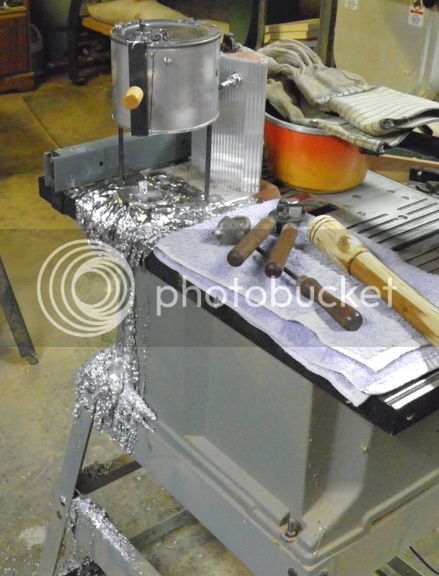Don Steele
45 Cal.
Fleener,
When I’m getting the pot up to temperature after plugging it in, I’ll set the thermostat pretty high so it puts a lot of heat into the metal. As the temperature of the metal in the pot starts closing in on my target, say 775-800 deg F, I reduce the setting on the thermostat and allow things to stabilize. It’s been my experience that it holds quite well during a casting session. I leave my thermometer in the pot. It has a “clip” that fits over the body of the pot and holds it in place so that I can monitor the metal temperature constantly.
When I’m getting the pot up to temperature after plugging it in, I’ll set the thermostat pretty high so it puts a lot of heat into the metal. As the temperature of the metal in the pot starts closing in on my target, say 775-800 deg F, I reduce the setting on the thermostat and allow things to stabilize. It’s been my experience that it holds quite well during a casting session. I leave my thermometer in the pot. It has a “clip” that fits over the body of the pot and holds it in place so that I can monitor the metal temperature constantly.







